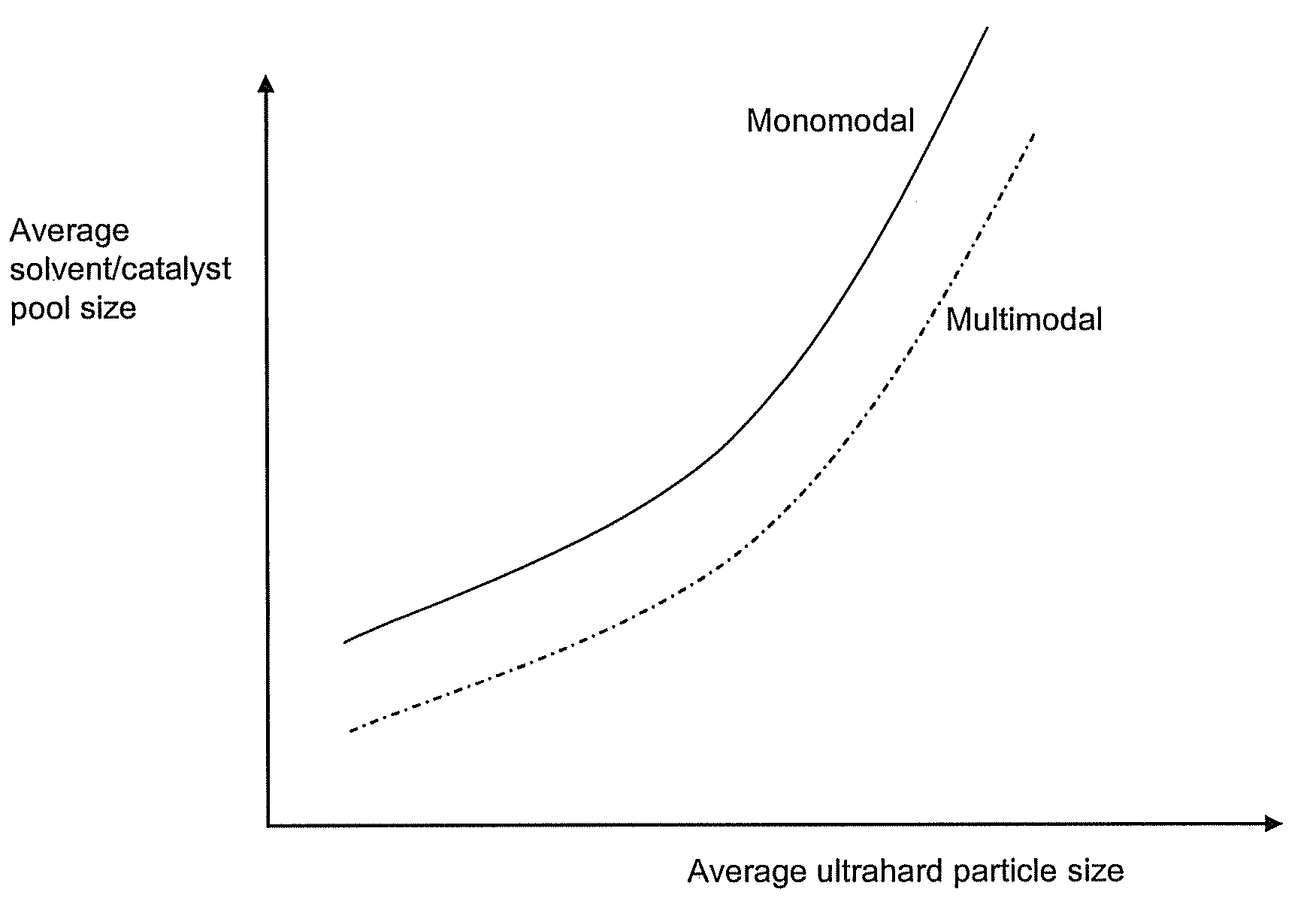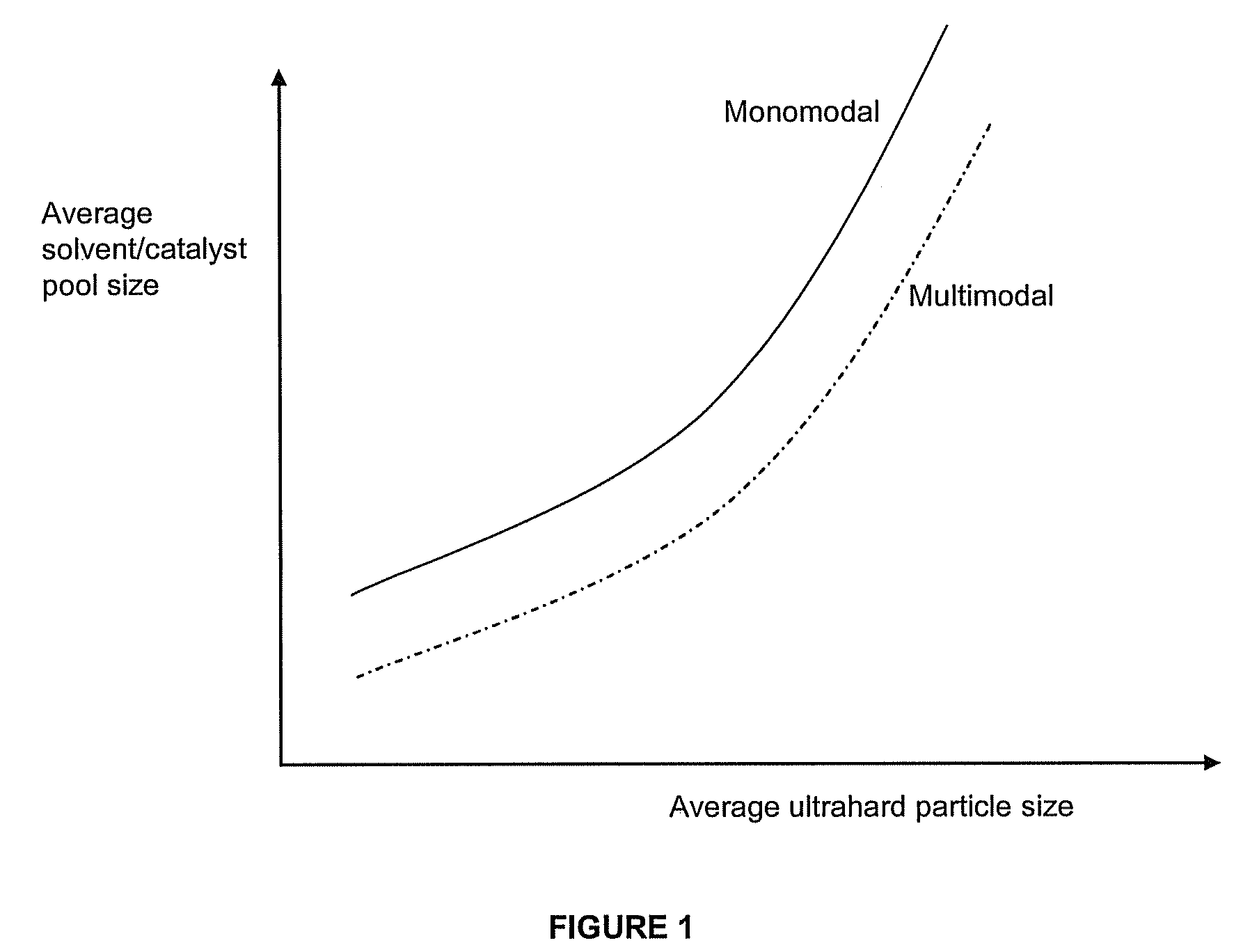Abrasive compacts
a technology of abrasive compacts and compacts, which is applied in the field of abrasive compacts, can solve the problems of reducing the wear resistance of abrasive compacts, and brittleness, so as to improve the impact resistance and fatigue resistance, and improve the wear resistance of finer grained materials. the effect of the effect of the quality of the material
- Summary
- Abstract
- Description
- Claims
- Application Information
AI Technical Summary
Benefits of technology
Problems solved by technology
Method used
Image
Examples
Embodiment Construction
[0026]The present invention is directed to abrasive compacts, in particular ultrahard polycrystalline abrasive compacts, made under high pressure / high temperature conditions. The abrasive compacts are characterised in that the binder phase is distributed in such a manner as to maximize the average size of the pools in relation to the overall average grain size of the ultrahard particles, where the ultrahard particle distribution is multimodal.
[0027]The ultrahard abrasive particles may be diamond or cubic boron nitride, but are preferably diamond particles.
[0028]The ultrahard abrasive particle mass will be subjected to known temperature and pressure conditions necessary to produce an abrasive compact. These conditions are typically those required to synthesize the abrasive particles themselves. Generally, the pressures used will be in the range 40 to 70 kilobars and the temperature used will be in the range 1300° C. to 1600° C.
[0029]The abrasive compact, particularly for diamond comp...
PUM
| Property | Measurement | Unit |
|---|---|---|
| particle size | aaaaa | aaaaa |
| particle size | aaaaa | aaaaa |
| particle size | aaaaa | aaaaa |
Abstract
Description
Claims
Application Information
 Login to View More
Login to View More - R&D
- Intellectual Property
- Life Sciences
- Materials
- Tech Scout
- Unparalleled Data Quality
- Higher Quality Content
- 60% Fewer Hallucinations
Browse by: Latest US Patents, China's latest patents, Technical Efficacy Thesaurus, Application Domain, Technology Topic, Popular Technical Reports.
© 2025 PatSnap. All rights reserved.Legal|Privacy policy|Modern Slavery Act Transparency Statement|Sitemap|About US| Contact US: help@patsnap.com


